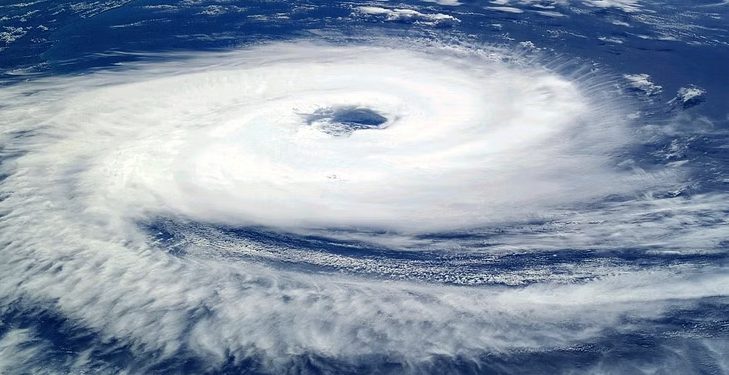Paris: Winds up to 180 kilometers per hour (108 mph) slammed France’s Atlantic coast overnight as Storm Ciaran lashed countries around western Europe, uprooting trees, blowing out windows, and leaving 1.2 million French households without electricity Thursday.
Strong winds and rain also battered southern England and the Channel Islands, where gusts of more than 160 kph (100 mph) were reported. Hundreds of schools stayed closed in the coastal communities of Cornwall and Devon as downed trees and flooding hindered morning commutes.
Flights from airports on the Channel Islands of Jersey, Guernsey, and Alderney were canceled. Dutch airline KLM scrapped all flights leaving and arriving in the Netherlands from the early afternoon until the end of the day, citing the high sustained wind speeds and powerful gusts expected in the country.
“It looks like a once-in-every-few-years storm for the UK and France,” Bob Henson, a meteorologist and science writer with Yale Climate Connections said on Wednesday, adding that Ciaran could turn into “a once-in-a-generation storm”.
A weather-related death already was confirmed in France. A truck driver was killed when his vehicle was hit by a tree in northern France’s inland Aisne region, Transport Minister Clement Beaune said.
Nearly all coastlines of the French mainland were under severe weather warnings Thursday morning, from Calais on the English Channel to all the way down the shores of the Atlantic Ocean to Spain, as well as much of France’s Mediterranean coast and Corsica, according to national weather service Meteo-France.
The weather service reported record-breaking wind speeds of 108 mph (180 kilometers per hour) along the Brittany coast. The wind reached up to 96 mph (160 kph) on the Normandy coast and up to 90 mph (150 kph) inland. Waves of almost 33 feet (10 metres) were expected in the country’s northwestern tip.
Local trains were cancelled across a swath of western France, and all roads in the Finistere region of Brittany were closed Thursday morning. Beaune urged people to avoid driving and to at least exercise caution when travelling across areas with weather warnings.
‘We see how roads can be fatal in these circumstances,’ he told broadcaster France-Info.
The storm cut power to some 1.2 million French households as of Thursday morning, electrical utility Enedis announced in a statement. That includes about half of the homes in Brittany, the Atlantic peninsula hardest hit by Ciaran. Enedis said it would deploy 3,000 workers to restore power as soon as weather conditions allowed.
In the UK, transportation agencies also advised residents in parts of southern England to stay home and not travel. The Maritime and Coastguard Agency urged people to keep away from the coast.
“Stay out of dangerous situations,’ the agency said in a post on X, formerly known as Twitter. “A selfie in stormy conditions isn’t worth risking your life for.’
The Met Office, the government weather agency, issued amber warnings for high winds for parts of southern England. An amber warning is the second highest level of alert, meaning there is a danger to life from flying debris.
The storm produced more than travel misery in the Netherlands.
The eighth edition of the national headwind cycling championship was swiftly organised for riders prepared to pedal into the teeth of the storm Thursday along an 8.5-kilometer (5.3-mile) coastal barrier on bikes with no gears.
The event is only held when a southwesterly storm with a minimum of wind force seven barrels up the North Sea coast.
Friederike Otto, a senior lecturer at Imperial College London’s Grantham Institute for Climate Change and the Environment, said few studies have looked at whether climate change is causing higher wind speeds. Answering the question is hampered by a lack of wind speed observations from far back in the past, she said.
But the rainfall from large storms has increased due to human-induced climate change, Otto said. That’s because a warmer atmosphere can hold more moisture. On that, the science was “quite clear,” she said, with a 7 per cent increase in rainfall for each degree Celsius (1.8 degrees Fahrenheit) of global warming.
AP







































